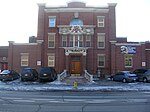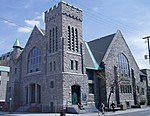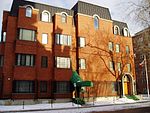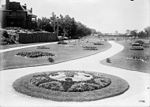Ottawa Auditorium
1923 establishments in OntarioDefunct National Hockey League venuesDefunct indoor arenas in CanadaDefunct indoor ice hockey venues in CanadaDemolished buildings and structures in Ottawa ... and 6 more
Former music venues in CanadaMusic venues in OttawaOttawa Senators (original) arenasSports venues completed in 1923Sports venues in OttawaUse mdy dates from August 2018

The Ottawa Auditorium was a 7,500-seat arena located in Ottawa, Ontario. It was located in Downtown Ottawa at the corner of O'Connor and Argyle Streets, today the site of the Taggart Family YMCA. Built primarily for ice hockey, the arena was also used for sports events, assemblies and musical concerts.
Excerpt from the Wikipedia article Ottawa Auditorium (License: CC BY-SA 3.0, Authors, Images).Ottawa Auditorium
Argyle Avenue, (Old) Ottawa Centretown
Geographical coordinates (GPS) Address Phone number Website Nearby Places Show on map
Geographical coordinates (GPS)
| Latitude | Longitude |
|---|---|
| N 45.411388888889 ° | E -75.689722222222 ° |
Address
YMCA (Taggart Family Y)
Argyle Avenue 180
K2P 1Z4 (Old) Ottawa, Centretown
Ontario, Canada
Open on Google Maps









